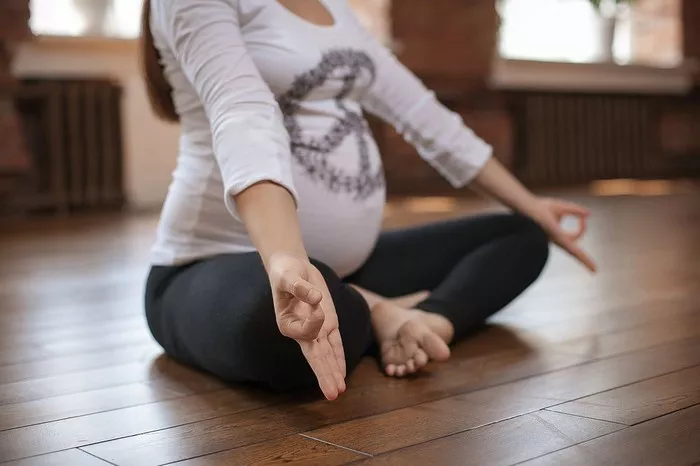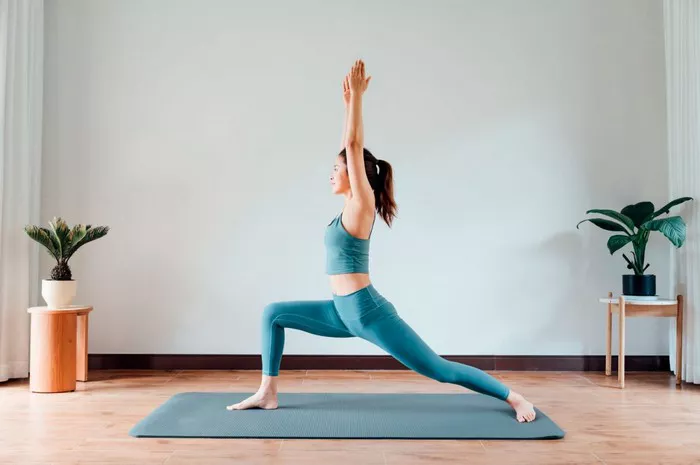Pregnancy is a beautiful journey, but it also comes with its share of challenges, one of the most common being sleep disturbances. As your body undergoes significant changes, finding a comfortable sleeping position and achieving restful sleep can become increasingly difficult. Prenatal yoga offers a holistic approach to address this issue, helping expectant mothers relax, unwind, and prepare for a good night’s sleep. Here, we explore the six best prenatal yoga poses that can help improve sleep quality during pregnancy.
1. Supported Savasana (Corpse Pose)
Benefits:
Supported Savasana is a deeply relaxing pose that helps in calming the mind and body. It alleviates stress, reduces anxiety, and promotes a sense of tranquility, making it easier to drift into sleep.
How to Do It:
- Lie on your back with a bolster or pillow under your knees to relieve any strain on your lower back.
- Place a pillow or folded blanket under your head for support.
- Allow your arms to rest by your sides with palms facing up.
- Close your eyes and focus on your breath, taking slow, deep inhales and exhales.
- Stay in this pose for 10-15 minutes, allowing your body to completely relax.
Tips:
- Ensure that your lower back and neck are fully supported to avoid any discomfort.
- If lying on your back is uncomfortable, you can also try this pose on your side with pillows supporting your head and between your knees.
See Also: 7 Yoga Poses for Alleviating Back Pain During Pregnancy
2. Viparita Karani (Legs-Up-the-Wall Pose)
Benefits:
Viparita Karani is excellent for reducing swelling in the legs and feet, a common issue during pregnancy. It also promotes relaxation and can help in alleviating lower back pain.
How to Do It:
- Sit with one side of your body against a wall.
- Swing your legs up onto the wall as you lower your back to the floor, forming an L shape with your body.
- Place a pillow or folded blanket under your hips for added support.
- Let your arms rest by your sides, palms facing up.
- Close your eyes and breathe deeply, staying in this pose for 5-10 minutes.
Tips:
- Use additional props, such as a blanket or bolster, under your hips if needed for comfort.
- Avoid this pose if you experience any discomfort in your lower back or if you have high blood pressure.
3. Supta Baddha Konasana (Reclining Bound Angle Pose)
Benefits:
This pose opens the hips, stretches the inner thighs, and promotes relaxation. It can help in reducing stress and tension, making it easier to fall asleep.
How to Do It:
- Sit on the floor with your knees bent and soles of your feet together.
- Slowly lie back, using pillows or bolsters to support your spine and head.
- Allow your knees to fall open, supported by pillows or blocks under each thigh.
- Place your arms by your sides, palms facing up.
- Close your eyes and take deep, calming breaths, staying in this pose for 10-15 minutes.
Tips:
- Ensure that your spine is well-supported to avoid any strain.
- If your hips feel tight, use more pillows under your thighs for support.
4. Balasana (Child’s Pose)
Benefits:
Child’s Pose is a gentle, restorative pose that helps in relieving tension in the back, shoulders, and neck. It encourages deep breathing and can be very calming for the mind.
How to Do It:
- Start on your hands and knees in a tabletop position.
- Spread your knees wide apart, keeping your big toes touching.
- Sit back onto your heels and extend your arms forward, resting your forehead on the floor or a pillow.
- Breathe deeply, focusing on relaxing your entire body.
- Stay in this pose for 5-10 minutes.
Tips:
- Use a bolster or pillow under your chest and head for added comfort.
- If your knees feel uncomfortable, place a blanket under them for support.
5. Side-Lying Savasana
Benefits:
Side-Lying Savasana is particularly beneficial during the later stages of pregnancy when lying on the back becomes uncomfortable. It helps in reducing pressure on the lower back and promotes relaxation.
How to Do It:
- Lie on your left side with a pillow under your head for support.
- Place a pillow between your knees to keep your hips aligned.
- Rest your top arm on a pillow in front of you for added comfort.
- Close your eyes and focus on your breath, taking slow, deep inhales and exhales.
- Stay in this pose for 10-15 minutes.
Tips:
- Use as many pillows as needed to ensure your body is fully supported and comfortable.
- Adjust the position of the pillows to relieve any discomfort in your hips or lower back.
6. Cat-Cow Pose (Marjaryasana-Bitilasana)
Benefits:
Cat-Cow Pose helps in stretching and strengthening the spine, improving posture, and relieving tension in the back and neck. It also promotes relaxation and can help in reducing stress.
How to Do It:
- Start on your hands and knees in a tabletop position with your wrists under your shoulders and knees under your hips.
- Inhale, arch your back, and lift your head and tailbone towards the ceiling (Cow Pose).
- Exhale, round your back, and tuck your chin towards your chest (Cat Pose).
- Continue moving between these two poses with your breath, inhaling in Cow Pose and exhaling in Cat Pose.
- Repeat for 5-10 rounds, then return to a neutral tabletop position.
Tips:
- Move slowly and mindfully, focusing on the movement of your spine with each breath.
- If you have any discomfort in your wrists, place a folded blanket under them for support.
Conclusion
Incorporating these prenatal yoga poses into your daily routine can help in alleviating some of the common discomforts associated with pregnancy and promote better sleep. Remember to listen to your body and modify the poses as needed to ensure comfort and safety. Practicing these poses regularly can help you relax, reduce stress, and improve your overall well-being during pregnancy, leading to more restful and rejuvenating sleep.
Related topics:




















